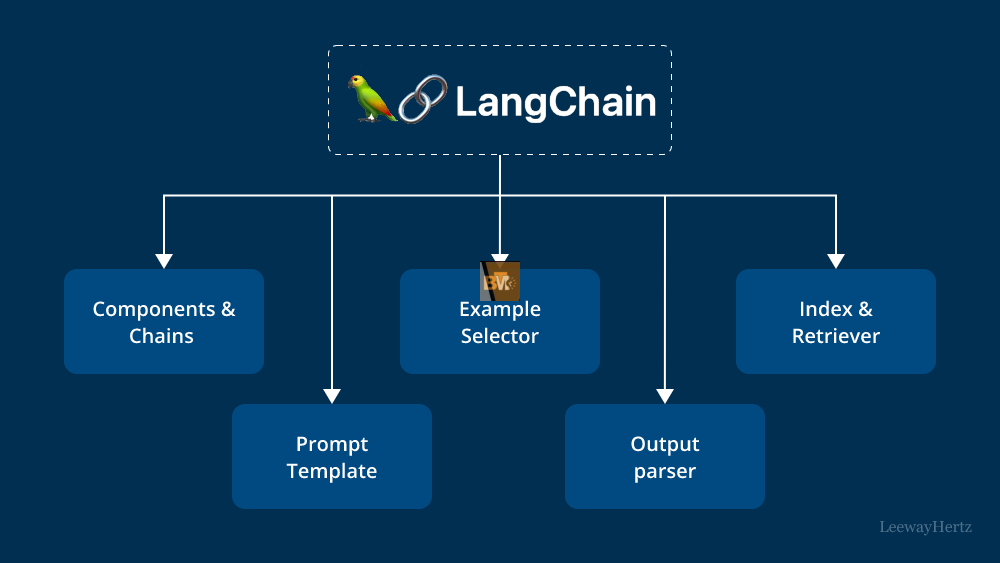Forms are an essential part of collecting information, whether you’re conducting a survey, creating an application, or gathering feedback. But the process of designing and creating forms can sometimes feel time-consuming and repetitive. Luckily, the advent of large language models (LLMs) has revolutionized how we handle such tasks. So, is there an LLM that can create forms for you? The short answer is yes! LLMs, like OpenAI’s ChatGPT, can not only help you create forms but also make the process smoother and more efficient. Let’s dive deeper into how these advanced AI tools can simplify form creation for businesses, developers, and beginners alike.
What Is an LLM and How Does It Work?
Before understanding how LLMs can create forms, it’s essential to know what an LLM is. An LLM (Large Language Model) is a type of artificial intelligence model trained on vast amounts of text data. This enables the AI to understand human language, process it, and generate coherent responses. Popular examples of LLMs include OpenAI’s GPT models, Google’s Bard, and others like Claude from Anthropic.
At their core, LLMs work by predicting what comes next in a sequence of text. For instance, if you type, “Create a form for collecting customer feedback,” the LLM can generate suggestions, templates, or even code snippets for that specific task. This prediction-based approach makes LLMs highly versatile and capable of handling tasks like writing, summarizing, coding, and, yes, creating forms.
How Do LLMs Understand Text?
The ability of LLMs to understand and process text comes from their complex architecture, which is built on transformers. Transformers are a type of neural network architecture that excels at recognizing patterns in sequences of data, such as language.
Here’s how it works:
- Pre-Training: LLMs are trained on massive datasets that include books, articles, websites, and other text-based content. This helps them learn the structure of language, grammar, and context.
- Fine-Tuning: After pre-training, LLMs are fine-tuned for specific tasks like customer service, coding, or, in this case, form creation.
- Contextual Understanding: When you provide input to an LLM (e.g., “Create a feedback form for a restaurant”), it uses its training to interpret your intent and deliver a relevant output.
This ability to understand context is what allows LLMs to generate highly relevant and accurate forms for users.
Can LLMs Really Create Forms for You?
Absolutely! LLMs can create forms with ease. Whether you’re looking for a basic contact form, a survey, or a more complex application form, LLMs can assist you in drafting them. They can provide complete form structures, field labels, and even write code snippets in languages like HTML, CSS, and JavaScript to help developers integrate forms directly into websites or applications.

For example, if you input, “Create a registration form for an online event,” an LLM can output:
- The key fields required, such as Name, Email, and Contact Number.
- Advanced suggestions like adding a dropdown for selecting ticket types or checkboxes for meal preferences.
- Pre-written HTML and CSS code for the form design.
Why Use an LLM for Form Creation?
The benefits of using LLMs for creating forms are manifold:
- Time-Saving: Instead of starting from scratch, LLMs can generate a form template in seconds.
- Customization: You can tailor the form according to your requirements by simply describing what you need.
- Error-Free Code: For developers, LLMs can provide clean and functional code, reducing the chances of bugs.
- Adaptability: LLMs can handle both simple and complex forms, adapting to various use cases.
How Do LLMs Understand Your Needs?
One of the most impressive aspects of LLMs is their ability to understand user intent. By analyzing the words and context of your input, they can infer exactly what type of form you need. For instance:
- If you ask, “Create a feedback form for a restaurant,” the LLM will focus on generating fields relevant to customer feedback, such as “Food Quality,” “Service Rating,” and “Suggestions.”
- If you ask for a job application form, it will include fields like “Work Experience,” “Education,” and “Resume Upload.”
This adaptability makes LLMs incredibly intuitive and efficient for form creation.
Are LLMs Easy to Use for Beginners?
Yes, LLMs are designed to be user-friendly, even for people with no technical background. You don’t need to know how to code or design forms manually. Simply type in a request in plain English, and the LLM will do the heavy lifting for you. Many platforms that offer LLM services, such as OpenAI’s ChatGPT or Google’s Bard, feature easy-to-navigate interfaces that guide you through the process.
For developers or advanced users, LLMs can also integrate seamlessly into workflows via APIs, enabling automated form generation directly within apps or websites.
What Types of Forms Can LLMs Create?
LLMs can create almost any type of form you can think of. Here are some examples:
- Contact Forms: Collect basic details like name, email, and message.
- Survey Forms: Use checkboxes, radio buttons, and dropdowns to gather insights.
- Registration Forms: Perfect for events, workshops, or online classes.
- Application Forms: Include detailed fields for job applications, scholarships, or memberships.
- Feedback Forms: Gather customer or employee feedback with rating scales and open-ended questions.
By simply specifying your requirements, you can generate any form type quickly and accurately.
Examples of Popular LLM Tools
Several LLM tools are designed to help with form creation, either directly or indirectly. Some popular options include:

- OpenAI’s ChatGPT: A highly versatile tool for generating text, code, and form templates.
- Google Bard: Useful for brainstorming form ideas and generating text-based instructions.
- Anthropic’s Claude: Known for its natural language understanding and adaptability.
- Zapier with AI Integration: Helps automate workflows, including form creation tasks.
- Typeform with AI Add-ons: Combines user-friendly form-building with AI suggestions.
These tools make it easier than ever to get started with LLMs for form creation.
How to Get Started With LLMs for Forms
Getting started with LLMs is simple:
- Choose an LLM platform (e.g., OpenAI’s ChatGPT).
- Input your requirements in plain language (e.g., “Create a feedback form for a hotel”).
- Review and refine the generated form.
- Use the output directly or integrate it into your preferred platform or website.
Benefits of Using LLMs for Form Creation
- Speed: Save hours by generating forms instantly.
- Accuracy: Reduce errors with AI-generated code and structure.
- Cost-Effectiveness: Eliminate the need for professional designers or developers.
- Scalability: Generate multiple forms for various use cases without hassle.
Are LLM-Generated Forms Customizable?
Yes, LLM-generated forms are highly customizable. Once the AI generates a form, you can easily tweak field names, add or remove sections, and adjust design elements to match your preferences. Most LLMs also support integration with form-building platforms, making it easier to edit and refine the final output.
Are LLMs the Right Tool for You?
If you frequently need forms for your business, events, or personal projects, LLMs are an excellent choice. They combine ease of use with powerful capabilities, making them suitable for beginners and professionals alike. However, for very advanced forms with intricate workflows, pairing LLMs with dedicated form-building platforms might be the best approach.
The Bottom Line
In today’s fast-paced world, LLMs offer a quick and efficient way to create forms without requiring technical expertise. Whether you’re looking for a basic contact form or a complex application, LLMs like OpenAI’s ChatGPT can help you generate professional results in seconds. Their versatility, ease of use, and ability to understand your needs make them a valuable tool for individuals and businesses alike.
So, is there an LLM that can create forms? The answer is a resounding yes—and it’s easier than you think!







Leave a Reply